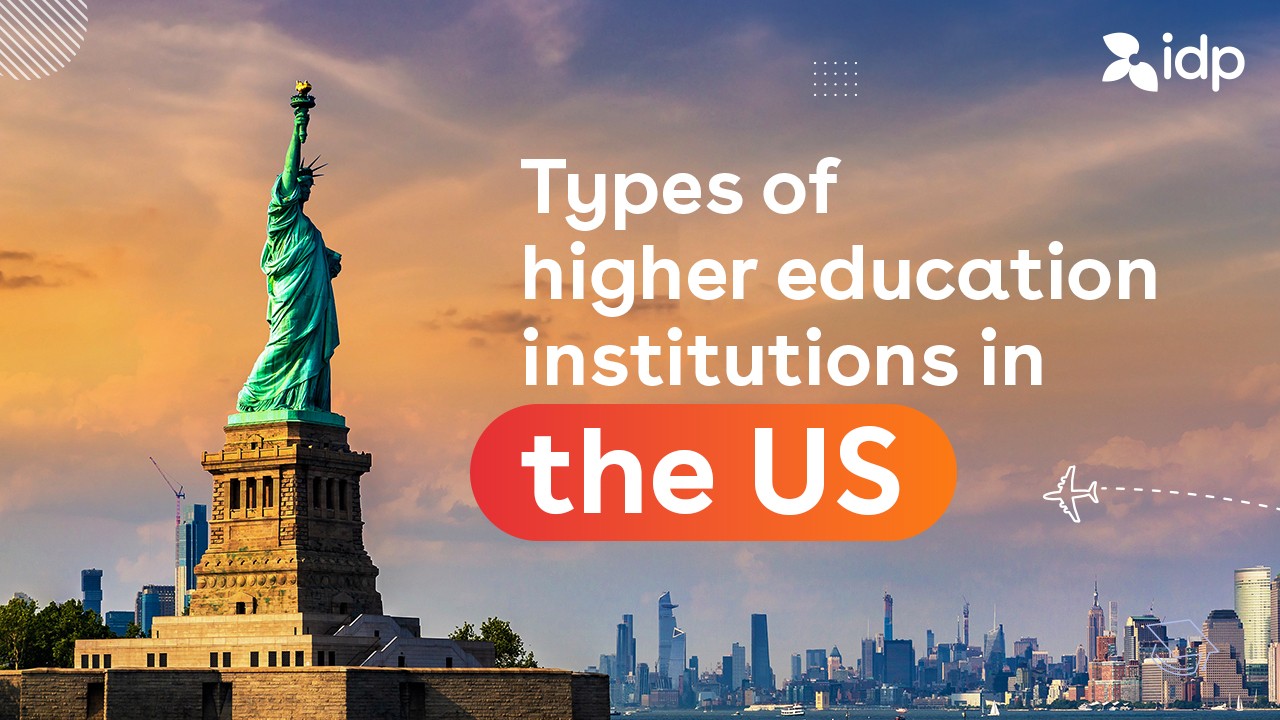-
Table of Contents
“Unlocking the Path to Success: Navigating the Diversity of U.S. Higher Education Institutions”
Understanding the Different Types of U.S. Higher Education Institutions is crucial for individuals seeking to pursue higher education in the United States. The U.S. education system offers a diverse range of institutions, each with its own unique characteristics and educational opportunities. By familiarizing oneself with the various types of institutions, prospective students can make informed decisions about their academic and career goals. This article aims to provide an overview of the different types of U.S. higher education institutions, including universities, colleges, community colleges, and vocational schools.
The Distinctions Between Public and Private U.S. Higher Education Institutions
When it comes to pursuing higher education in the United States, there are a multitude of options available. One of the key distinctions to be aware of is the difference between public and private higher education institutions. Understanding these distinctions can help prospective students make informed decisions about where to pursue their education.
Public higher education institutions are funded by the government, either at the state or federal level. These institutions are typically larger in size and offer a wider range of programs and majors. They often have a strong focus on research and are known for their cutting-edge facilities and resources. Public universities are generally more affordable for in-state students, as they receive funding from the state government. However, out-of-state students may face higher tuition costs.
Private higher education institutions, on the other hand, are funded through tuition fees, donations, and endowments. They are typically smaller in size and offer a more intimate learning environment. Private universities often have a specific religious or philosophical affiliation, which can influence the curriculum and campus culture. These institutions tend to have higher tuition costs compared to public universities, but they may also offer more financial aid opportunities.
One of the key advantages of public higher education institutions is their affordability for in-state students. State governments heavily subsidize these institutions, making them more accessible to local residents. Public universities also tend to have a more diverse student body, as they attract students from a wide range of backgrounds and socioeconomic statuses. Additionally, public universities often have strong connections to local industries and businesses, providing students with valuable networking opportunities and internships.
Private higher education institutions, on the other hand, often boast smaller class sizes and a more personalized learning experience. With fewer students, professors can provide more individual attention and mentorship. Private universities also tend to have a strong alumni network, which can be beneficial for job placement and career advancement. These institutions often have a strong emphasis on liberal arts education, fostering critical thinking and a well-rounded education.
It is important to note that the distinctions between public and private higher education institutions are not absolute. There are public universities that offer a more intimate learning environment, and there are private universities that prioritize research and have large student populations. It is crucial for prospective students to thoroughly research and visit different institutions to determine which one aligns with their academic and personal goals.
When considering public or private higher education institutions, it is also important to consider the financial aspect. While public universities may be more affordable for in-state students, private universities may offer more generous financial aid packages. It is essential to carefully review the cost of attendance and available financial aid options before making a decision.
In conclusion, understanding the distinctions between public and private higher education institutions is crucial for prospective students. Public universities offer affordability and a diverse student body, while private universities provide a more personalized learning experience and strong alumni networks. Ultimately, the choice between public and private institutions depends on individual preferences, academic goals, and financial considerations.
Exploring the Diversity of U.S. Community Colleges and Technical Schools
When it comes to higher education in the United States, there is a wide range of options available to students. While universities and colleges are often the first institutions that come to mind, there are also community colleges and technical schools that offer unique opportunities for students seeking a different path. In this article, we will explore the diversity of U.S. community colleges and technical schools, shedding light on what sets them apart from traditional four-year institutions.
Community colleges, also known as junior colleges, are two-year institutions that offer associate degrees and certificates. They are often seen as a stepping stone for students who plan to transfer to a four-year college or university to complete their bachelor’s degree. Community colleges provide a more affordable option for students who want to save money on tuition fees before transferring to a larger institution. Additionally, they often have smaller class sizes, allowing for more personalized attention from professors.
One of the key advantages of attending a community college is the flexibility it offers. Many community colleges have evening and weekend classes, making it easier for students who work or have other commitments to pursue their education. Furthermore, community colleges often have open admissions policies, meaning that they accept all students who have a high school diploma or equivalent. This inclusivity provides opportunities for individuals who may not have had the chance to attend a traditional four-year college.
Technical schools, on the other hand, focus on providing specialized training in specific fields such as healthcare, technology, or skilled trades. These institutions offer programs that are designed to prepare students for immediate entry into the workforce. Technical schools typically offer certificates or diplomas rather than degrees, allowing students to gain practical skills in a shorter amount of time.
One of the main advantages of attending a technical school is the hands-on training it provides. Students learn through practical experience, often working with industry-standard equipment and tools. This type of education is highly valued by employers, as it ensures that graduates are job-ready and possess the necessary skills to succeed in their chosen field. Additionally, technical schools often have strong connections with local businesses and industries, providing students with networking opportunities and potential job placements.
Both community colleges and technical schools offer a more affordable alternative to traditional four-year institutions. Tuition fees at these institutions are generally lower, making higher education more accessible to a wider range of students. Additionally, many community colleges and technical schools offer financial aid and scholarships to help students cover their educational expenses.
In conclusion, community colleges and technical schools play a vital role in the U.S. higher education system by providing diverse options for students. Community colleges offer a flexible and affordable pathway to a four-year degree, while technical schools focus on specialized training for immediate entry into the workforce. Both institutions offer unique advantages and opportunities for students seeking alternative paths to higher education. Whether it’s saving money, gaining practical skills, or exploring a specific field, community colleges and technical schools provide valuable options for students to pursue their educational and career goals.
Understanding the Structure and Offerings of U.S. Research Universities and Liberal Arts Colleges
Understanding the Different Types of U.S. Higher Education Institutions
When it comes to pursuing higher education in the United States, there are various types of institutions to choose from. Two common types are research universities and liberal arts colleges. While both offer valuable educational opportunities, they differ in terms of structure and offerings. In this article, we will delve into the structure and offerings of U.S. research universities and liberal arts colleges, helping you gain a better understanding of these institutions.
Research universities are known for their emphasis on research and the pursuit of knowledge. These institutions typically have a wide range of academic programs and offer degrees at all levels, from undergraduate to doctoral. They often have large student populations and extensive facilities, including libraries, laboratories, and research centers. Research universities are known for their faculty members who are experts in their fields and often engage in cutting-edge research. This research focus allows students to be exposed to the latest advancements in their chosen fields.
In addition to research opportunities, research universities also offer a diverse range of academic programs. Students can choose from a wide array of majors and minors, allowing them to tailor their education to their interests and career goals. These institutions often have specialized schools or colleges within them, such as a business school or a school of engineering, which provide focused education in specific fields.
On the other hand, liberal arts colleges have a different approach to education. These institutions place a strong emphasis on a well-rounded education that encompasses a broad range of subjects. Liberal arts colleges typically have smaller student populations and smaller class sizes, which fosters a more intimate and interactive learning environment. Faculty members at liberal arts colleges often prioritize teaching and mentoring, providing students with personalized attention and guidance.
Liberal arts colleges offer a comprehensive curriculum that includes courses in humanities, social sciences, natural sciences, and the arts. This broad-based education aims to develop critical thinking, communication, and problem-solving skills, which are highly valued in today’s job market. While liberal arts colleges may not offer as many specialized programs as research universities, they provide a solid foundation for further study or a variety of career paths.
Another notable difference between research universities and liberal arts colleges is the focus on undergraduate education. Research universities often have graduate programs and research opportunities that attract students who are interested in pursuing advanced degrees or engaging in research. Liberal arts colleges, on the other hand, primarily focus on undergraduate education and may not offer as many graduate programs.
In conclusion, understanding the structure and offerings of U.S. research universities and liberal arts colleges is crucial when considering higher education options. Research universities provide a research-intensive environment with a wide range of academic programs, while liberal arts colleges offer a well-rounded education with a focus on undergraduate studies. Both types of institutions have their own unique advantages and can provide valuable educational experiences. Ultimately, the choice between a research university and a liberal arts college depends on individual preferences, career goals, and learning style.In conclusion, understanding the different types of U.S. higher education institutions is crucial for individuals seeking to pursue higher education. The three main types include universities, colleges, and community colleges, each offering distinct academic programs and degrees. Universities typically offer a wide range of undergraduate and graduate programs, while colleges focus on undergraduate education. Community colleges provide two-year associate degrees and vocational training. It is important for students to research and consider their academic goals, financial situation, and career aspirations when choosing the type of institution that best suits their needs.




